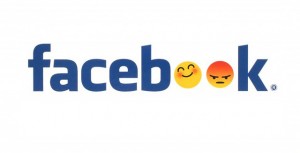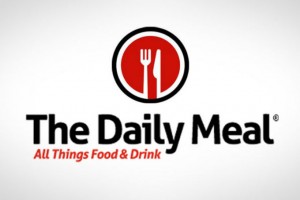The From Line
What’s the best way to get heavy foot traffic to your new cafe in New York City?
a) Rent a property right next to major tourist attractions and build your cafe there
b) Buy a property out of the way of tourist attractions and build your cafe there
(Yes, obviously buying a property next to major tourist attractions would be the best move, but you don’t have that kind of money.)
Here we face the dilemma of the “long short road” and the “short long road.”
The Publisher
Spanfeller Media Group (SMG) is a fast growth media company, headed up by Jim Spanfeller, former CEO of Forbes. The Daily Meal (TDM) was the first site launched by SMG in the early months of 2011. Since then it has proven to be one of the fastest growing content sites ever and the fastest growing site within the food sphere.
The Situation
As an online publisher that is constantly producing content for distribution, The Daily Meal was manually compiling newsletters several times per day to distribute to their subscribers. This was time-consuming, resource intensive, and the furthest thing from automated. There was also no monetization effort in place which left TDM feeling like they were leaving money on the table every single day. Jim Spanfeller created an in-house solution--he assembled two teams: one team to search for automation options for their daily email distribution, and another team to look into monetization opportunities. Little did he know that they could find solutions to both at Gold Lasso.
According to to Litmus “Email Analytics”, 55% of all email is opened on mobile devices. It’s time for publishers to face the fact that information is being consumed more on the go, and email that is not designed for the mobile world first is doomed for failure.
User Experience
It’s all about the user experience. Understanding what is pleasing to the eye and attention-grabbing to subscribers is vital. There is a lot to be learned from the layout of the email design and how it is interpreted -- to ensure a second glance and not an immediate dump into the trash.
For starters, it’s imperative to create a responsive design that will optimize viewer traffic. We’re all familiar with responsive web design, and email is no stranger to this veneer. The methods to generate responsive email design are practically scientific. A effortless change of the font size, layout, adding padding, modifying color, navigation, scaling of images, hierarchy, and alteration of content can make all the difference.
Everyone knows that the key to any successful email program is subscriber engagement. The same goes for email monetization. The challenge lies in training your subscribers to engage, not just "skim" through your emails without any action. Ensuring your subscribers click is paramount to your monetization success. Subscribers should know exactly where to locate value quickly and click on it.
When you do not provide constant and multiple ways to engage, you are leaving money on the table. There are four main components required to train your subscriber's to engage. It's easy to remember them, D.A.R.T.
As the definition of native advertising continues to take form, one thing that remains constant is that native advertising’s success is relegated to publisher standards of quality and experience. Even as advertisers arm themselves with advanced analytics and programmatic buying, the continuous shrinking of display’s performance reveals in some aspects, a negative correlation between advertiser standards and the dwindling engagement they produce. The digital success of native advertising is proof that advertisers must trust that publishers know their audience better than they do when they are in the publisher’s forum. It’s true that advertisers have more of a holistic view of their customer by their ability to collect and analyze data across different channels and sources. However, the publisher is the ringmaster at a particular moment in time with its direct finger on the customer’s pulse. After all, consumers go to publishers to consume content, not ads, right?
Native Advertising Is A Culture
Even as certain aspects of native advertising become programmatic, we should be hopeful that publisher formatting characteristics, the ones that lend themselves to a quality experience, continue to remain in the publisher's control. At the same time, publishers must realize that native advertising is a culture, not a format. It’s a culture that tells an advertiser’s story using the publisher’s core competencies in a way that will resonate best with the publisher’s audience. Therefore, native advertising is the cooperation of a publisher’s editorial, advertising and production departments to create the best possible experience for their consumers. Gone are the days of the siloed church and state mantra between advertising and journalism. Millennials are quite aware that journalistic integrity has been compromised by scandals and editorial bias and they are at peace with advertising’s role – as long as it doesn’t interfere with their experience of content consumption.
Consumer's Insatiable Demand For Experience
The publishers that move with this cultural shift in content consumption could reap unprecedented margins as the market could produce a winner take all phenomenon in their respective media niches. The technologies that once fragmented media could eventually consolidate it as Millennials chase the best possible experience. Those publishers who embrace this shift by perfecting the experiences they create could eventually attract the majority of audience for their niche. Native advertising is a necessary part of that experience. It melds together the objectives of the advertiser with the creativity of the publisher in such a way that advertising is noticeable, entertaining, but most important, easily digested.
How Will Native Advertising Scale?
As the industry wobbles down the native advertising path, the biggest challenge for both publishers and advertisers alike is scale. Publishers are starting to play a pivotal role in helping advertisers produce content that appeals to their audience, but scaling production across hundreds of advertisers is a difficult task. Additionally, as advertisers relinquish their grip on creativity, scaling their audience reach in native formats have been proven futile. Programmatic technologies and industry standards will help both publishers and advertisers to achieve native scale, but only to a point. Native display, sponsored content and other formatting initiatives that contain native elements definitely facilitate scale, however true native advertising is an experience that only the publisher can provide. Culture and creativity are the epicenter of native advertising, characteristics that cannot reside with the advertiser.





